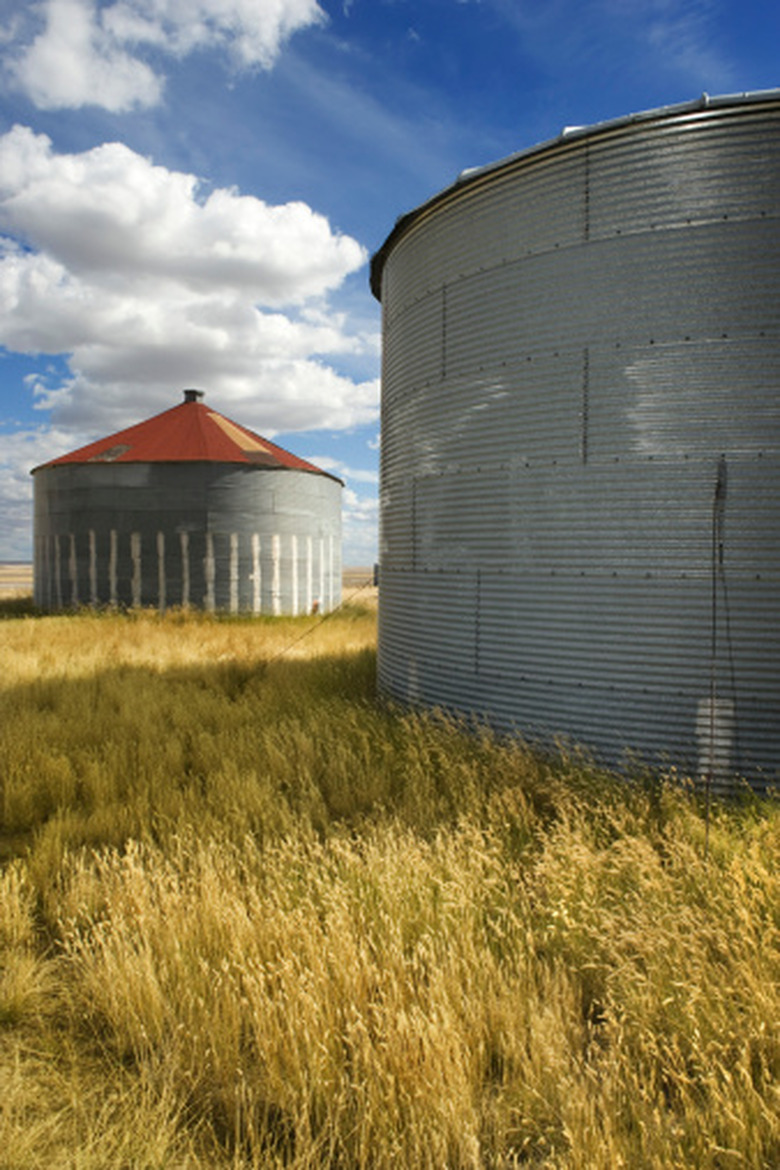How To Calculate The Area Of A Grain Bin
Grain bins are familiar sights in cereal farming areas. Although they could be any shape, most are cylindrical and look like vast metal tins with conical roofs. They are used, as the name suggests, for storing harvested grain. The size varies, typically between 18 and 60 feet in diameter, and some are large enough to be converted into houses when their agricultural life is over. Calculating the area of a bin can be done by using a mathematical formula. A calculator is required.
Step 1
Establish the diameter of the bin. Find this in the manufacturers' product information, stamped on a plaque attached to the bin, or by measuring it. If it is necessary to measure the bin, measure from one side to the other, along a line passing through the center of the bin.
Step 2
Divide the diameter by two to determine the radius. For example, if the diameter is 40 feet, the radius is 20 feet (40/2 = 20).
Step 3
Calculate the area by substituting the radius value, obtained in the previous step, into the formula: Area = pi x (radius x radius), where pi is the mathematical constant, 3.1415. The result is the area of the grain bin. For example, a grain bin with a radius of 20 feet has an area of 1,256.6 square feet (3.1415 x 400 = 1,256.6).
Things Needed
- Calculator
- Long tape measure
TL;DR (Too Long; Didn't Read)
If the bin has an empty central column, to circulate air, treat is as a separate circle. Find the surface area and subtract it from the overall bin area.
Warning
People die by falling into grain bins. Never attempt to walk on the surface a grain while taking measurements.
References
- Mother Earth News; Convert a Used Grain Bin to a New House; Troy Griepentrog; April 2009
- "Webster's New World College Dictionary 4th Edition"; Michael Agnes, ed.; 2007
- Western Kentucky University, Department of Mathematics; The Area of a Circle; Tom Richmond Ph.D
Cite This Article
MLA
Robinson, David. "How To Calculate The Area Of A Grain Bin" sciencing.com, https://www.sciencing.com/calculate-area-grain-bin-8403071/. 24 April 2017.
APA
Robinson, David. (2017, April 24). How To Calculate The Area Of A Grain Bin. sciencing.com. Retrieved from https://www.sciencing.com/calculate-area-grain-bin-8403071/
Chicago
Robinson, David. How To Calculate The Area Of A Grain Bin last modified August 30, 2022. https://www.sciencing.com/calculate-area-grain-bin-8403071/
